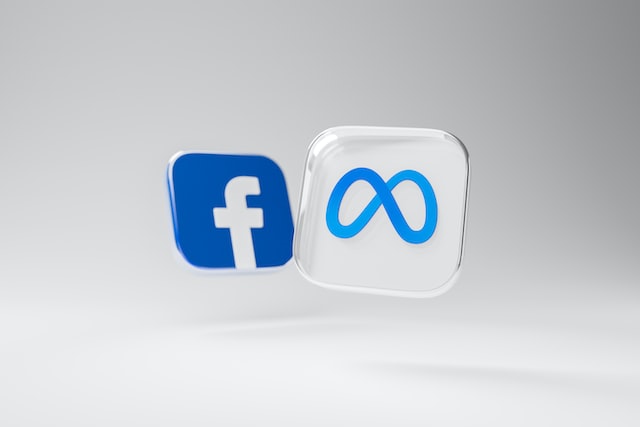Before we get into the specifics of Facebook/Meta, let’s understand competitor analysis. Competitor analysis is a strategic research method companies use to identify, evaluate, and understand their current and potential competitors within the market. It’s an essential business strategy component and instrumental in understanding the industry landscape.
The process usually involves the following steps:
- Identifying Key Competitors: The first step is to identify who your competitors are. These may be direct competitors (those who offer the same or similar products or services as you) or indirect competitors (those who provide different products or services but compete for the same consumer dollar).
- Analyzing Competitors’ Strategies and Objectives: Once competitors are identified, the next step is to understand their business strategies and objectives. This may involve analyzing their marketing materials, financial performance, customer reviews, or any public information available about the company.
- Assessing Competitors’ Strengths and Weaknesses: This step involves evaluating the identified competitors’ strengths and weaknesses. Strengths include unique products or services, strong brand recognition, and superior customer service. Weaknesses include poor product quality, weak customer service, or high prices.
- Understanding Competitors’ Products/Services: Understanding what your competitors offer and how your products or services compare is important. This could involve looking at features, quality, pricing, customer service, and marketing strategies.
- Observing Competitors’ Reaction Patterns: Some companies react more aggressively than others when faced with competition. Understanding these patterns lets you predict how these companies might respond to your business strategies.
- Drawing Conclusions and Formulating Strategy: The final step is to take all the information gathered from the analysis, draw meaningful conclusions, and use those to formulate or adjust your business strategies.
The main goal of a competitor analysis is to understand the competitive landscape, spot opportunities, and threats, and position your company most advantageously. It helps to inform strategic decisions, from product development to marketing and sales efforts. Now, let’s do a competitor analysis of Facebook/Meta.
Here is the competitor analysis of Facebook/Meta
Google (Alphabet Inc.)
- Digital Advertising: Both Meta and Google are giants in the digital advertising space. Google’s advertising business is primarily based on search advertising, where it monetizes user searches on Google Search and display advertising through its Google Display Network. On the other hand, Meta focuses on advertising within its social platforms, leveraging the extensive user data from Facebook, Instagram, and WhatsApp. Both companies offer targeted advertising capabilities, which are highly effective and thus attractive to advertisers.
- User Data and Analytics: Both companies collect vast amounts of user data, which they use to improve their services and target advertisements. This data is a critical asset in understanding consumer behavior and preferences.
- Content and Media: Google and Meta compete in content and media through YouTube (owned by Google) and various Meta platforms like Facebook Watch and Instagram. These platforms compete for user attention, content creators, and advertising dollars.
- Technology and Innovation: Both companies invest heavily in emerging technologies such as artificial intelligence (AI), machine learning, and augmented reality (AR). Google, with its advanced AI research and products like Google Assistant and Meta, with its investments in AR/VR and the development of the Metaverse, is in a race to lead in these future technologies.
- Messaging and Communication: Google’s various messaging apps (like Google Meet and Google Chat) compete with Meta’s WhatsApp and Messenger. Both companies aim to offer comprehensive communication solutions to users.
- E-Commerce and Payments: Both companies are making strides in e-commerce and payment solutions. Google integrates shopping features into its search and YouTube platforms, while Meta focuses on integrating e-commerce more deeply into its social platforms.
- Privacy and Regulation: Companies continually adapt their policies and technologies to address privacy concerns and regulatory pressures. As public and regulatory scrutiny increases, how they handle user data and privacy can be a competitive edge.
How does Google make money? What is Google’s Business Model?
- User Engagement and Content: Both platforms vie for user attention and engagement. While Facebook offers a broad range of content types, including status updates, photos, videos, and links to external content, Twitter is known for its concise, real-time updates and has a strong presence in news, entertainment, and politics. The competition lies in attracting and retaining active users who engage with content, generate data, and attract advertisers.
- Advertising: A primary source of revenue for both companies is digital advertising. Facebook and Twitter offer targeted advertising options to businesses, leveraging their extensive user data to enable advertisers to reach specific demographics. Facebook’s more extensive user base and comprehensive data collection often provide a broader reach for advertisers. Still, Twitter’s niche in real-time content and conversations can offer unique advertising opportunities, especially around live events and trending topics.
- Platform Features and Innovations: Meta and Twitter continuously evolve their platform features to enhance user experience and engagement. This includes algorithm updates, new content formats (like stories and live streaming), and enhanced interactivity features. They often observe and adapt to each other’s successful features; for instance, Twitter’s introduction of Fleets was seen as a response to the popularity of Stories on Instagram (owned by Meta).
- News and Information Dissemination: Twitter is often seen as a platform for breaking news and real-time information, while Facebook has a broader range of content. However, both platforms compete as sources of news and information, which involves challenges around content moderation, misinformation, and balancing freedom of expression with community standards.
- Monetization Strategies: While both platforms rely heavily on advertising, they explore different monetization strategies. Facebook has a more diversified approach, focusing on e-commerce and marketplace features, while Twitter has experimented with features like Super Follows to monetize content creators.
- Public Perception and Regulation: How each platform handles issues like user privacy, data security, misinformation, and content moderation affects their public perception and, consequently, their user base and engagement levels. How they adapt to regulatory changes and societal concerns can impact their competitive position.
Snap Inc.
- User Demographics and Engagement: Both companies vie for the attention of younger demographics. Snapchat is particularly popular among teens and young adults for its ephemeral messaging and fun camera filters. Meta, through platforms like Instagram and Facebook, also targets these demographics but has a broader user base across different age groups. The competition involves engaging users with features that resonate with their preferences and habits.
- Augmented Reality (AR) and Filters: AR technology and camera filters are a significant competition area. Snapchat has pioneered AR filters and lenses, which are highly popular among its users. Meta has responded by introducing similar features on Instagram and Facebook, such as face filters and interactive AR experiences.
- Advertising and Monetization: Both companies derive a significant portion of their revenue from digital advertising. They compete to offer innovative advertising solutions to brands, leveraging their user data for targeted advertising. Snapchat’s focus on a younger audience can be attractive for advertisers looking to reach this demographic, while Meta’s broader user base offers a wider reach.
- Content and Media: Snapchat’s Discover section features content from various media partners, competing with Meta’s offerings on Instagram (like IGTV) and Facebook Watch. Both companies are vying for partnerships with content creators and media companies to keep users engaged on their platforms.
- Innovation and Features: Meta and Snap Inc. are continuously innovating and introducing new features to attract and retain users. This includes developments in AR, new social networking features, and tools for content creators.
- Privacy and User Experience: Snapchat’s emphasis on privacy, with messages that disappear after being viewed, appeals to users seeking more private forms of communication. Meta has also enhanced privacy features, particularly messaging, to compete in this area.
- E-commerce Integration: Both platforms are exploring e-commerce as a new revenue stream. Snapchat uses AR for virtual try-ons and shopping experiences, while Meta integrates shopping features directly into Instagram and Facebook.
Tiktok
- Short-form Video Content: TikTok’s rise has primarily been attributed to its focus on engaging short-form video content. In response, Meta has developed similar features, most notably Instagram Reels, which allows users to create and share short videos, much like TikTok. Facebook also introduced short video features to compete in this space.
- User Engagement and Growth: TikTok has seen rapid growth, especially among younger audiences, with its highly engaging content and sophisticated recommendation algorithms. Meta competes for these demographics by enhancing its algorithmic recommendations and making its platforms more appealing to younger users.
- Advertising Revenue: Both companies rely heavily on advertising revenue. TikTok’s unique format and growing user base make it an attractive platform for advertisers, especially those targeting younger demographics. With its established advertising system and broader demographic reach, Meta competes by offering diverse advertising solutions across its family of apps.
- Innovative Features and User Experience: To keep up with TikTok, Meta has been innovating and introducing new features across its platforms, especially on Instagram. These include augmented reality filters, interactive content, and improved discovery features to enhance user experience and retain user interest.
- Content Creator Ecosystem: TikTok and Meta’s platforms (especially Instagram) have strong content creator communities. They compete to attract and retain content creators by offering various tools, monetization options, and support programs.
- Market Expansion and Global Presence: While TikTok has seen significant global success, it faces regulatory challenges in several markets. Meta leverages its worldwide presence and established infrastructure to compete in these markets, offering localized versions of its platforms and features.
- Privacy and Data Security: With growing concerns around data privacy and security, how each company addresses these issues can influence user trust and preference. Meta’s approach to user privacy and data handling is essential to its competition with TikTok.
- Social Commerce: TikTok and Meta are exploring social commerce as a new revenue and user engagement avenue. Integrating shopping features directly into their platforms, they compete to provide seamless shopping experiences for users.
Apple
- Privacy and Data Management: Apple’s increasing focus on user privacy, particularly with the introduction of App Tracking Transparency (ATT) and other privacy features in iOS, has significantly impacted Meta’s ability to track users for advertising purposes. Meta, whose business model relies heavily on targeted advertising, competes by finding new ways to gather and leverage user data within the confines of these privacy frameworks.
- Messaging and Communication: Apple’s iMessage competes with Meta’s messaging platforms, WhatsApp and Messenger. Both companies aim to offer robust, secure communication tools, and there’s competition regarding features, security, and user base.
- Augmented Reality (AR) and Virtual Reality (VR): Both companies invest heavily in AR and VR. Apple is rumored to be working on AR glasses and other AR technology, while Meta has made significant investments in VR through its Oculus products and is developing AR technologies. This is an emerging area of direct competition regarding hardware and software innovation.
- Content and Services: Apple’s services like Apple News, Apple TV+, and Apple Music compete with Meta’s content offerings on platforms like Facebook Watch and Instagram. Both companies are vying for a share of the digital content and services market to keep users engaged within their ecosystems.
- E-commerce and Payment Systems: Apple Pay competes with Meta’s attempts to integrate payment and e-commerce solutions into its platforms. Both companies are exploring ways to make transactions more seamless within their ecosystems, whether in-app purchases, online shopping, or peer-to-peer payments.
- Hardware: Although Meta is primarily a software company, its forays into hardware with Oculus VR headsets and Portal devices put it in competition with Apple’s hardware products, albeit in a more niche market.
- Advertising Platforms: Apple’s expansion into digital advertising, although not as extensive as Meta’s, puts the two in competition. Apple’s control over the App Store and its devices offers unique advertising opportunities, potentially infringing on Meta’s advertising revenue.
- Market Influence and Control: Both companies significantly influence digital markets and trends. Their decisions, from privacy policies to hardware innovations, can dramatically affect the other’s business strategies and market position.
Amazon
- Digital Advertising: One of the primary areas of competition between Meta and Amazon is digital advertising. Meta is a giant in the digital advertising space, leveraging its vast social media user data for targeted ads. With its immense e-commerce platform, Amazon also offers targeted advertising based on consumer shopping habits and searches. As Amazon expands its advertising capabilities, it becomes a more direct competitor to Meta in this lucrative space.
- E-commerce and Social Commerce: Meta has increasingly integrated e-commerce features into its platforms, particularly with Facebook Marketplace and Instagram Shopping. This move positions Meta as a competitor in the online retail space, challenging Amazon’s dominance. Both companies are working to streamline and integrate the online shopping experience seamlessly within their respective platforms.
- Streaming and Content: Amazon competes in the content streaming space with Amazon Prime Video, which could be seen as a competitor to Meta’s Facebook Watch and Instagram TV (IGTV). While Amazon focuses more on long-form content and original productions, and Meta’s on user-generated and short-form content, there is competition for viewers’ time and engagement.
- Artificial Intelligence and Machine Learning: Both companies invest heavily in AI and machine learning technologies. While their immediate applications may differ, with Amazon focusing on AI for e-commerce, cloud computing, and its Alexa digital assistant, and Meta focusing on AI for enhancing social media experiences and advertising, they compete in the broader field of AI technology development and talent acquisition.
- Cloud Services: Amazon Web Services (AWS) is a leader in cloud computing services, a sector where Meta also participates, albeit more as a user than a provider. Meta’s large-scale use of cloud computing and data storage technologies means it competes with Amazon for resources and infrastructure in this domain.
- Hardware: Though Meta is less focused on hardware than Amazon, its ventures into hardware with Oculus VR headsets and Portal devices overlap with Amazon’s Kindle, Echo, and other consumer electronics. This competition is more indirect, as their hardware serves different primary functions.
- Workplace and Collaboration Tools: With tools like Workplace by Facebook, Meta competes in enterprise communication and collaboration. Amazon also has a stake in its Chime service and AWS offerings.
- Data and Analytics: Both companies are powerhouses in data collection and analytics, leveraging their respective user bases and customer data for insights, which they use to optimize their services and target advertising or product recommendations.











